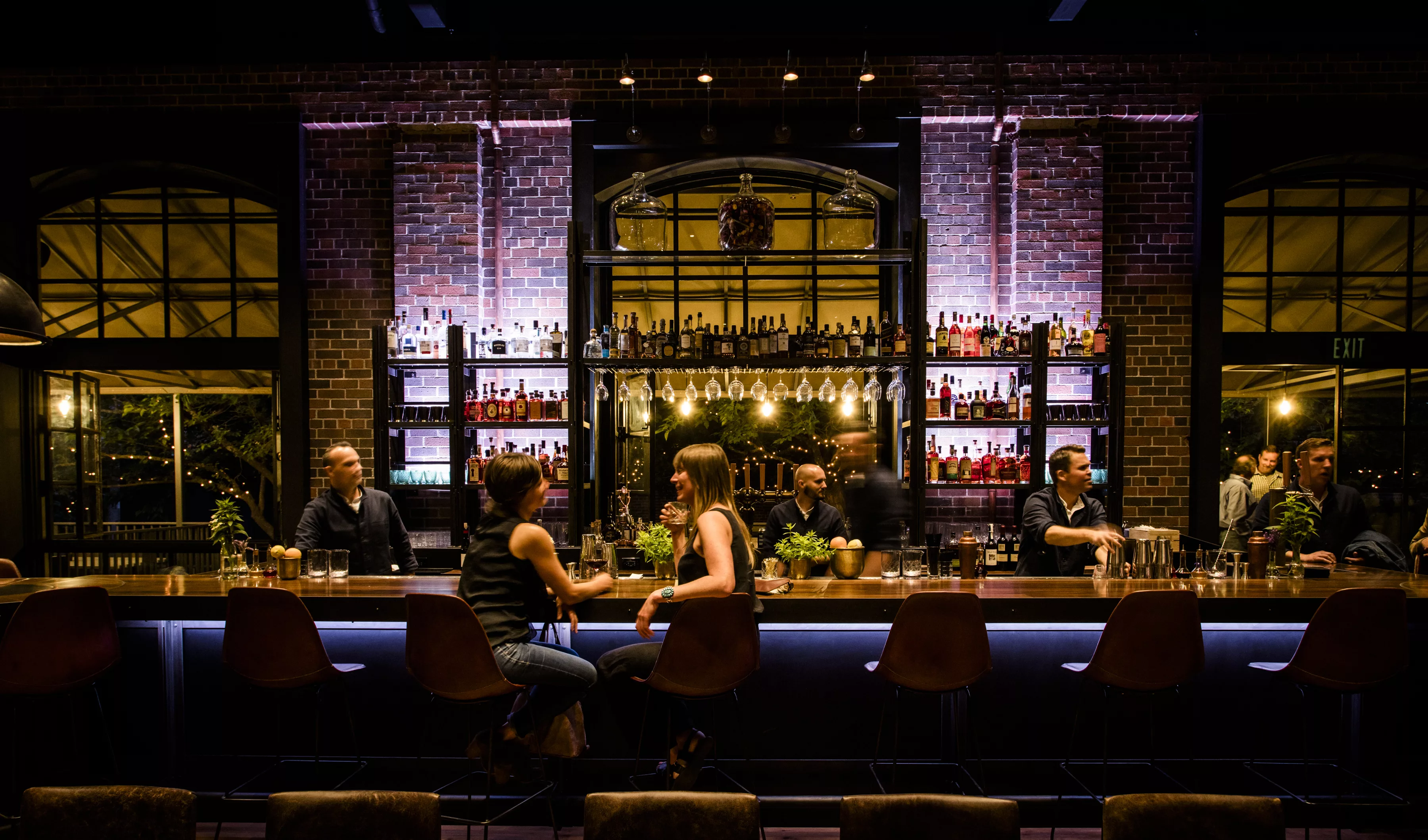
The bustling bar at the Charter Oak in St. Helena. (Photo by Kelly Puleo)
Restaurants from Sausalito to Glen Ellen are utilizing new locations, outdoor tables and trimmed back menus to draw in locals and visitors—and they’re doing it with financial savvy and a more developed understanding of digital marketing.
Online orders are down from early days of the pandemic, but North Bay restaurants still rely heavily on them and takeout as additional sources of revenue. Since the labor market is tight and interest rates are high, restaurants are focusing on staff retention and looking to private investors for support. They’re also strengthening ties with local producers to feature seasonal ingredients, even more so since the end of winter.
Margie Butler, co-owner of Perry’s, an American classic comfort food restaurant with locations in Novato and Larkspur, as well as two in San Francisco, says she expects it to get even busier this summer. “We have so much more outdoor seating than we did previously that the weather is a big factor,” Butler says. “With tables to seat 150 people outdoors at our Larkspur location, we’ve seen an incredible sustained interest in outdoor dining.”

Adds Butler: “The concept of takeout became normalized during the pandemic. That is now a solid additional revenue stream.”
Restaurant owners say St. Patrick’s Day was the turning point when customers started turning out in high numbers.
“We have to deal with higher prices for food due to inflation and rent costs are going up,” says Nathan Su, manager of Junction Brewery & Grill in American Canyon. “For three years we kept food and drink prices for customers the same due to the pandemic. Now, we’re seeing more customers come out for daily specials, happy hours and music events. Our strategy, plus added innovations, has paid off.”
Restaurants with creative seating arrangements who frequently use social media and are experts in spreading word of mouth have seen extraordinary results.
“Our seasonal yurt village takes over our courtyard in the winter,” says Aitor Bischoff, general manager of The Charter Oak, a fine-dining family-style restaurant in St. Helena. “It was another big hit this year, offering individual dining spaces for our guests. With the sun back, the courtyard has reopened. We can now utilize this space again for service and corporate events. This is in addition to our two private group dining spaces and our tables on the terrace. We even have a great courtyard activation coming up in June, a dinner party featuring a curated selection of beers from Russian River Brewing Company.”
Despite the optimism, many owners are concerned their profit margins are thin.
“During the past three years, the restaurants that survived cut back on hours, menu options and the number of tables. They’re trying to make the same amount of revenue or more with fewer costs,” says Robert Eyler, professor of economics at Sonoma State University.
How Mexican restaurants are faring
Mexican-owned and -themed restaurants make up many of the North Bay’s restaurants. A high number of these restaurants are small, family-owned operations with little outside space and a small or non-existent online presence. They are concerned about raising prices because customers are unwilling to pay upward of $15 for items like burritos.

“So many restaurant owners are feeling they just can’t get ahead due to COVID, the fires, rain, cold weather and rising food prices. We’re now seeing a gas surcharge of $10 to $15 for food delivery as well. These costs add up over time,” says Octavio Diaz, owner of Agave Healdsburg, a traditional Mexican restaurant in Healdsburg. Diaz also owns Mitote Food Park in Santa Rosa and Agave Uptown, a fine-dining traditional Mexican restaurant in Oakland.
Jason Echeverria is the owner of Yuca Mami, a Yucatan Peninsula-oriented food stand in Mitote. He also owns Los Gallos Taquería, a traditional Mexican taquería in Rohnert Park, and Los Dos Gallos, a Sinaloa and Jalisco-style seafood restaurant in southern Santa Rosa. Echeverria is excited about new dishes for Los Dos Gallos, including Piña de Vallarta, a medley of seafood infused with pineapple juice served in half a pineapple.
Echeverria hopes to draw in business at the Rohnert Park restaurant by upgrading the large patio.
“I want to add fire pits, palm trees, and speakers to make it a place where people celebrate together,” says Echeverria.
Martin Chaparro is the owner of Chila-Killer Café, a Rohnert Park café that specializes in cuisine from Querétaro, a state in north central Mexico. He is reaching a broad customer base by offering Mexican and American cuisine.
“We have everything from Eggs Benedict to chilaquiles cooked in my family’s traditional style. People really love our choices of salsa, which range from chile morita, a spicy salsa made with smoky dried jalapeños, to guajillo chiles, which are more fruity and mild,” says Chaparro.
Catherine Bergen is owner of C Casa in Napa’s Oxbow Market, a Mexican restaurant that offers distinctive tacos made with ingredients such as duck confit and spiced ground buffalo. Bergen says business is brisk, but staffing remains a challenge.
“We have additional locations in San Ramon and Emeryville and are looking to expand into Marin. We started out in 2010 in Napa in a 400-square-foot stall. The Napa restaurant now has full sit-down service and outdoor seating, but it took over 12 years to get here,” says Bergen.
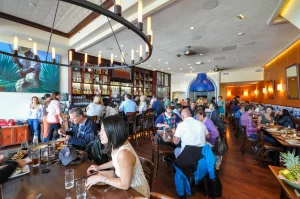
Michael Mindel is a partner in Copita Tequileria y Comida, a modern Mexican restaurant, and Poggio Trattoria, a classic Italian trattoria, both in Sausalito. Mindel says full-service restaurants are seeing the return of bookings for large groups, including weddings and birthdays.
“It’s great that we have so many customers, locals and visitors, coming back. Yet higher prices for certain items can cause a concern,” says Mindel.
For example, Copita is currently not selling as much ultra-premium tequila.
“The fear of an economic downturn is making consumers more cautious than they were in 2022,” says Mindel.
Marcos Suarez, business-diversity program manager for the Sonoma County Economic Development Board, says local governments can assist small business and underserved business owners by encouraging them to participate in programs to increase exposure.
“One example is Restaurant Week. Back in the day, this was only for upscale restaurants. But now food trucks in Mitote Food Park are offering special menus and getting noticed. We want to put more BIPOC restaurants on the map,” says Suarez.
Fine dining restaurants hone their approach
Fine dining restaurants are using wine clubs, seasonal offerings, live entertainment, parklets and patios to attract customers.
Lauren Feldman, co-owner of Valley Bar and Bottle, a high-end American restaurant in Sonoma, says the sunny days are bringing out returning guests and members of the business’s wine club. Working with local producers helps save on fuel costs.
“Sourcing locally is popular with customers and reduces impacts due to global changes. It also helps us remain flexible to change the menu as needed or as the seasons demand. We currently purchase poultry and eggs from Silver Sky Ranch in Petaluma and vegetables and flowers from Paul’s Produce, Sunray Farm and Oak Hill Farm, among others—all in Sonoma,” says Feldman.
Feldman adds continuing some winter traditions, like guest winemaker nights and culinary pop-ups, pleases guests.
“Later this summer, we plan to open Valley Swim Club, a California seafood shack, on the west side of Sonoma. The restaurant will have an all-day menu with a big back patio for dining in as well as offer takeaway. We’re applying everything we’ve learned about streamlining offerings to the new restaurant,” says Feldman.
Lauren Kershner, owner of Songbird Parlour, a micro event space that offers fine dining food and beverages in Glen Ellen, says she attracts many guests through live entertainment.
“Our events include a monthly fried chicken night, comedy shows, winemaker dinners, and artist and author talks. Glen Ellen is such a small town that every restaurant does something special to set it apart,” says Kershner.
Songbird Parlour also brings in guests who are fans of Kershner’s catering business, Goodness Gracious.
Jordan Kivelstadt, owner of Bloom Carneros, a locally rooted American restaurant in Sonoma, says having the Kivelstadt Cellars’ tasting lounge on site draws in customers. So does showcasing the restaurant as a gathering space.
He adds that development of multi-pronged digital advertising increases engagement with customers returning to the Sonoma Valley.
“We use three key channels: social, mostly Instagram, email, still a great way to communicate more complex things with your fans, and Google optimization, [which] drives a lot of traffic,” says Kivelstadt.
Methods to train and retain staff
Local high school programs, including Maria Carrillo’s Culinary Arts program, and college programs, such as Santa Rosa Junior College’s Culinary Arts program and programs offered by Culinary Institute of America (CIA) at Greystone, aid the North Bay’s hospitality industry by graduating young adults familiar with the tri-county area.
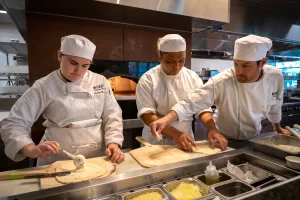
The numbers of graduates could be higher. As of mid-spring 2023, Santa Rosa Junior College had 175 students total enrolled in culinary arts classes. Betsy Fischer, chair of SRJC’s Culinary Arts program, says enrollment has steadily increased as pandemic restrictions have loosened.
“In addition, many of our students are already working in the local food and beverage industry. Most are already familiar with professional practices in the kitchen. We have good indicators that enrollment for fall 2023 will be higher,” says Fischer.
Fischer says SRJC is partnering with Sonoma County high schools and nonprofit organizations on mutual training opportunities, which will familiarize more potential students with SRJC’s Culinary Arts program. These will also facilitate the entry of adult learners looking to enter the industry.
“Our students pay under $10,000 to complete five certificates, from Restaurant Management to Baking and Pastry. This is a real bargain when compared with private schools,” says Fischer.
SRJC’s wine classes are part of the education that helped prepare Forest Kellogg, a SRJC Culinary Arts program graduate, to become the estate chef at J Vineyards & Winery in Healdsburg.
“I took three electives focused on wine, grew up in Sonoma County, and worked at a winery and a fine dining restaurant during my years there. The other valuable thing that SRJC taught me was to treat people kindly. It’s imperative that businesses in the hospitality industry treat people well,” says Kellogg.
Bhupinder “Sonu” Singh Chandi, owner and CEO of Chandi Hospitality Group, operates multiple Mountain Mike’s Pizza restaurants in Marin, Mendocino, Napa, and Sonoma counties and Beer Baron Whisky Bar & Kitchen, an American craft brewery and restaurant in Santa Rosa. Chandi says recently retention has been challenging, so the company invested in team building.
“We held our first annual employee picnic in April, providing a chance for employees

and their families to enjoy a nice meal and play games outside. As our company has continued to grow, we’ve brought employees from restaurants that have been open for years to newly opened locations. Sharing experiences has helped us build a dedicated team,” says Chandi.
Heather Irwin is the founder of the Petaluma-based nonprofit Sonoma Family Meal (SFM), which provides meals to Redwood Empire Food Bank. She is also the dining editor for Sonoma magazine and The Santa Rosa Press Democrat. Irwin confirms that nonprofits are also contributing to training culinary arts professionals.
This year, SFM’s first cohort of approximately 15 students, who span a variety of ages, is training at the nonprofit’s kitchen. The group, which has some younger people, is also focusing on including underserved women recommended by nonprofits such as The Living Room. which supports women and children who are experiencing or at risk of experiencing homelessness.
“The program will teach the students knife skills, culinary basics like how to make sauces and stocks, as well as ‘big cooking,’ cooking for a lot of people,” says Irwin. “Students will stage [intern] with a paid stipend at partner restaurants with the hopes of a job offer. We will also train students for specific partners if requested.”
The Marin, Solano-Napa, and Sonoma Small Business Development Centers (SBDCs) are nonprofits that provide no-cost advising, grant application assistance, and low-cost workshops for business owners. These centers support restaurant owners by assisting them in developing strategies to reach customers, increase sales, acquire funding and budget with inflation in mind.
Louise Dawson, director of the Sonoma SBDC, says one of the center’s new programs is Food INC, a six-session incubator to help launch small food businesses. Food INC is a collaboration between the Sonoma SBDC, the City of Santa Rosa and Miracle Plum, a Santa Rosa-based market and wine club.
At an April session in the Miracle Plum meeting room, cottage food makers talked with SBDC advisors about how to rent kitchens from local restaurants and showcase products like gluten-free cookies in restaurants’ dessert menus.
“In early 2024, Food INC will teach participants how to start a restaurant. We hope to have instructors teaching classes in Spanish and Vietnamese to increase the enrollment of people of Latino and Asian American and Pacific Islander descent,” says Dawson.
Mani Niall, the restaurant program advisor for the Northern California SBDC Restaurant Program, supports startup and existing restaurants and food businesses. Niall says prospective owners should focus on food costing.
“I advise that they create recipe cards and perfect their formulas. This also allows them to scale up or down as needed, which they can also apply to catering jobs,” says Niall.
Miriam Hope Karrell, director of the Marin SBDC, says few government and community grants are available right now.
“The good news is that customers have been returning to indoor dining. This spring, we’ve focused on sharing how owners can tell stories through images and video to reach customers,” says Karrell.
Stephanie Koehler, advisor for the Marin SBDC, says many North Bay restaurants could get more business if they revamped their websites and changed their online and physical Point of Sale (POS) systems to make online ordering easier.
“Once you have everything updated and online, customers can click through,” says Koehler.
Cathy Balach, lead business advisor for the Solano-Napa SBDC, says the return of tourism to the Napa Valley is finally beginning to benefit local restaurants.
“Wineries and hotels and resorts saw their numbers bounce back earlier. Restaurants saw guests show up last. The summer promises a rebound, especially for restaurants that partner with other hospitality businesses that attract visitors,” says Balach.
Lenders look for experience, success
Restaurant owners who want to apply for loans and grants should consult with their local SBDC to develop an overall budget. They should also ask peers which institutions lend to restaurants.
Diane Berthinier, senior vice president of lending for Redwood Credit Union, says restaurant owners typically seek loans to start up their business or expand.
“The money goes to rent a new location or pay for large equipment. We want members who bring their model for success to us. We will consider financing expansions to areas in and beyond the North Bay if the applicant has a solid budget,” says Berthinier.
Jason Ehn, commercial lending manager for Redwood Credit Union, says the majority of the restaurants that survived the pandemic are now stronger.
They know how to adjust for ever-changing food costs and compete for staff. We are interested in assisting restaurant owners with new and unique concepts like creating or renting a ‘ghost kitchen,’ which only serves food to-go,” says Ehn.
Yet a sizable number of North Bay restaurateurs have seen banks and credit unions be wary of granting loan applications. Other options include networks of family members supporting one another with equipment purchases and rent deposits and the development of groups of private investors who are fans of the restaurant’s concept and want to add locations.
Mindel says POS providers and credit card processors are happy to lend out half a million dollars against an existing business.
“Lending to a new location with the same concept, even one that is well-known and has a track record of success, is another story. We are in the process of adding a location for Copita to Willow Glen in San Jose. One South Bay bank asked us to deposit an amount equal to the amount of the loan we were seeking. That’s why we raised a loan fund,” says Mindel.
The Butlers say it helps to explain to private investors how ventures will offer a good return.
“The circumstances we’ve experienced in the past few years tested us,” says Perry Butler, Margie’s father and the restaurant’s founder. “Building that trust and redistributing cash during good times has given us a great deal of flexibility. We still need that going forward.”
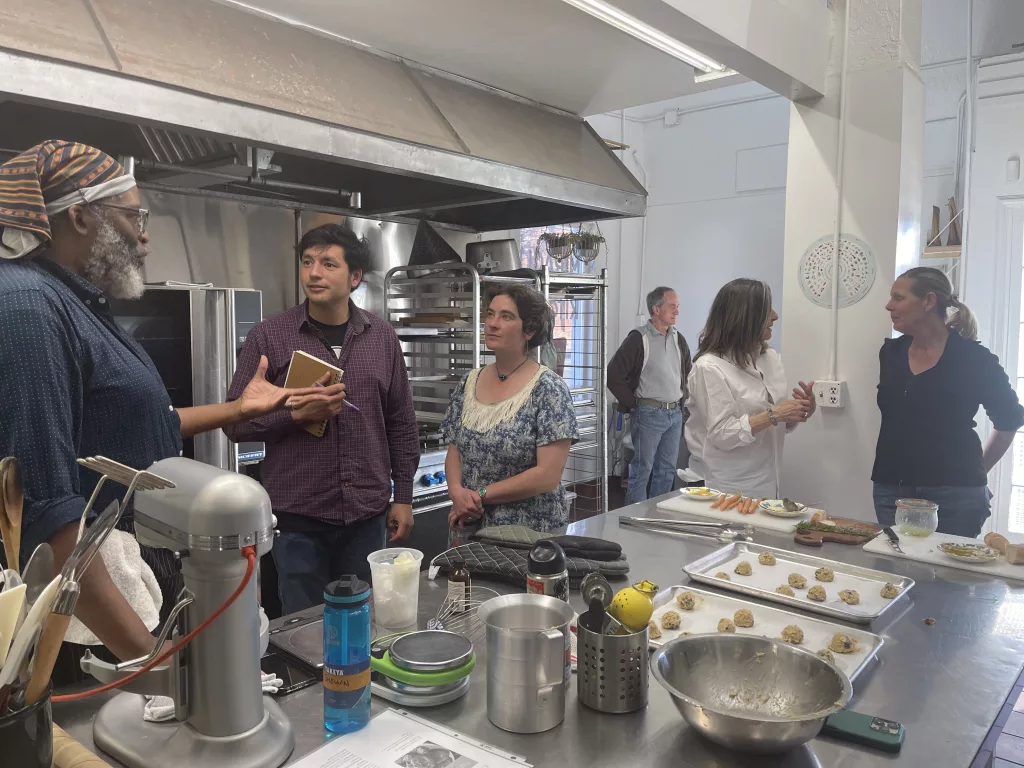


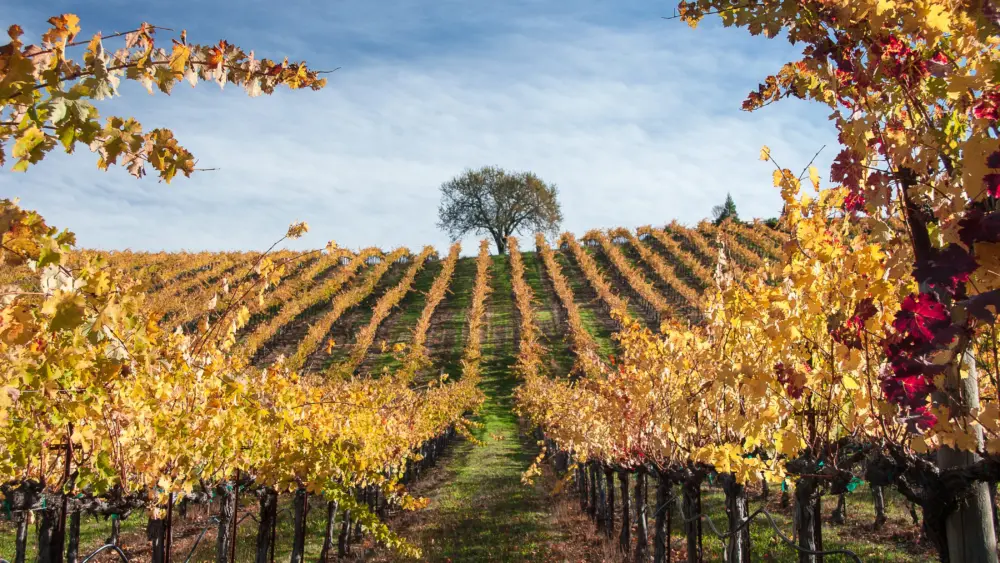

One thought on “The Tables Have Turned: North Bay Restaurants and the Post-Pandemic Dining Scene”
1QKqE1lDVHlAttJ2aJmXZaAcbpSThJaLokhNVz5vkr4Wp2rEJomDT95HLWK40XZCbYm6YH1Gm8yEoXqdL